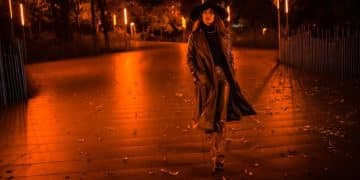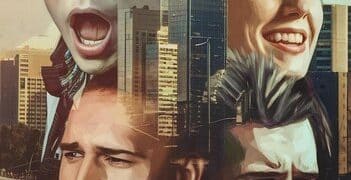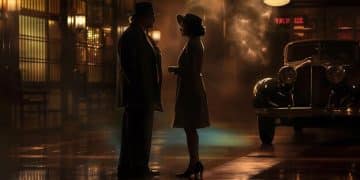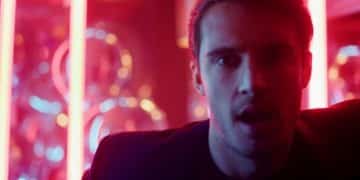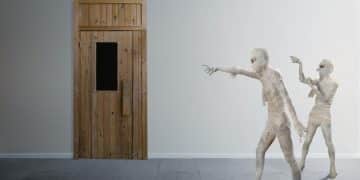The Evolution of the Anti-Hero: From Villain to Protagonist
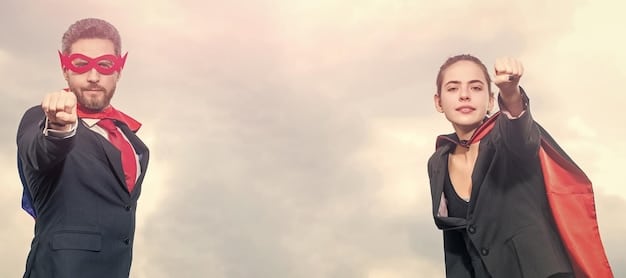
The Evolution of the Anti-Hero: From Villain to Protagonist explores the fascinating transition of morally ambiguous characters from villains to central figures, reflecting changing societal values and a growing fascination with complex and flawed individuals in storytelling.
The concept of a hero has undergone a radical transformation over the decades. No longer are audiences solely drawn to characters embodying pure virtue and unwavering moral rectitude. Instead, there’s a growing fascination with the evolution of the anti-hero: from villain to protagonist, deeply flawed figures who captivate us with their grit, moral ambiguity, and complex motivations.
The Dawn of the Anti-Hero
The anti-hero is not a new phenomenon, but its prominence in contemporary storytelling certainly signifies a shift in audience preferences. But what exactly defines an anti-hero, and why is their story so captivating?
Traditionally, a hero embodies unwavering moral principles and selflessly fights for the greater good. Conversely, the anti-hero is a protagonist who lacks these conventional heroic qualities. They might be driven by self-interest, possess questionable ethics, or even engage in morally reprehensible actions. Yet, they still command our attention and, at times, our sympathy.
Defining Characteristics of an Anti-Hero
Identifying an anti-hero often comes down to their core characteristics. Here are a few key traits that commonly define them:
- Moral Ambiguity: Anti-heroes operate in a gray area, blurring the lines between right and wrong. Their decisions are rarely clear-cut, and their motivations are often complex and contradictory.
- Flaws and Weaknesses: Unlike traditional heroes who are often portrayed as nearly perfect, anti-heroes are defined by their flaws. These could be personality quirks, addictions, or deep-seated insecurities.
- Self-Interest: While traditional heroes are motivated by altruism, anti-heroes are often driven by self-preservation or personal gain. They may be forced into heroic situations, but their primary motivation is rarely selfless.
The rise of the anti-hero reflects a growing desire for more authentic and relatable characters. We’re drawn to their imperfections and their struggles, seeing a reflection of our own vulnerabilities and moral compromises in their stories.
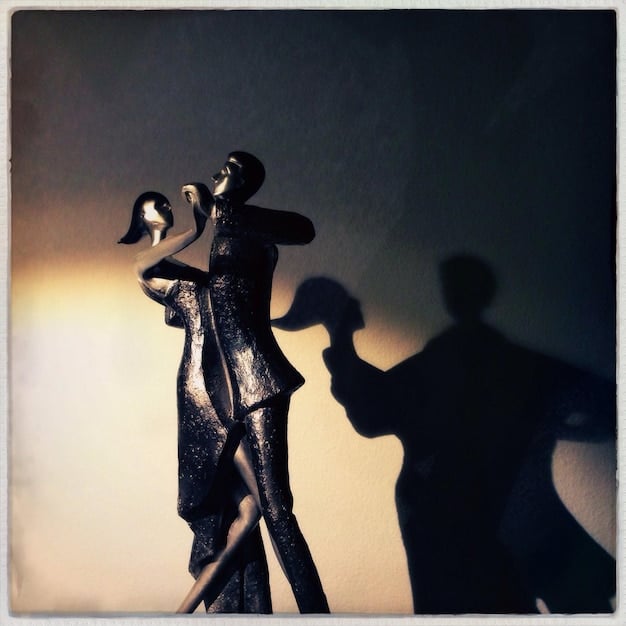
Early Examples and Influences
Though the term “anti-hero” might feel contemporary, the seeds of this archetype were sown long ago. Examining early examples reveals the historical context that shaped its development.
The roots of the anti-hero can be traced back to classic literature and early cinematic representations. Characters grappling with inner demons and operating outside the bounds of conventional morality laid the groundwork for the modern anti-hero.
Literary Roots of the Anti-Hero
Long before cinema, literature provided fertile ground for the development of flawed and morally complex characters:
- Shakespearean Tragedies: Characters like Macbeth and Hamlet, driven by ambition and revenge, showcase the internal struggles and moral compromises that define the anti-hero.
- Romantic Era Rebels: Figures like Lord Byron’s heroes embodied a sense of rebellious individualism and rejection of societal norms.
These literary figures challenged the traditional notion of the hero, emphasizing the importance of individual agency and the exploration of darker aspects of the human psyche.
The introduction of the anti-hero in literature allowed audiences to question conventional morality and identify with those who defy easy categorization.
The Grit of Film Noir
Film Noir was essential in the popularization of the Anti-Hero.
Film noir, emerging in the 1940s and 50s, offered a distinct visual and thematic style that perfectly suited the anti-hero. Shadowy cinematography, cynical narratives, and morally ambiguous protagonists became hallmarks of the genre.
- The Private Detective: Characters like Philip Marlowe (Humphrey Bogart) in “The Big Sleep” were cynical, jaded, and often willing to bend the rules to achieve their goals.
- The Femme Fatale: Women like Phyllis Dietrichson (Barbara Stanwyck) in “Double Indemnity” were manipulative, dangerous, and often drove the narrative with their actions.
The murky moral landscape of film noir provided the perfect setting for these characters to thrive, blurring the lines between heroes and villains and reflecting the anxieties of a post-war society.
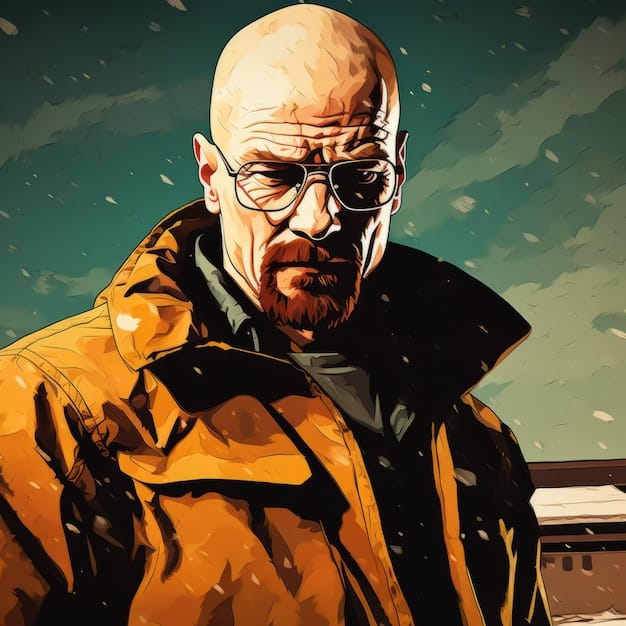
The Modern Anti-Hero in Television
With its serialized format and long-form storytelling, television has become the ideal medium for exploring the complexities of anti-heroic characters. How has television embraced and expanded this archetype?
The rise of prestige television in the late 20th and early 21st centuries marked a resurgence of the anti-hero. Shows like “The Sopranos,” “The Shield,” and “Breaking Bad” pushed the boundaries of what was acceptable on television, presenting morally ambiguous protagonists grappling with complex ethical dilemmas.
Key Television Anti-Heroes
These shows redefined the landscape of television, showcasing characters that were neither inherently good nor evil, but rather complex individuals struggling to navigate a morally ambiguous world:
- Tony Soprano (“The Sopranos”): A mob boss struggling with anxiety and family issues, Tony embodied the contradictions of the anti-hero.
- Walter White (“Breaking Bad”): A chemistry teacher turned drug kingpin, Walter’s descent into darkness was a compelling and disturbing journey.
- Don Draper (“Mad Men”): A charismatic advertising executive with a troubled past, Don’s secrets and flaws made him a fascinating and enigmatic figure.
These characters captivated audiences with their complexity, forcing viewers to confront their own moral judgments and question traditional notions of heroism.
Why We Love Anti-Heroes
The popularity of the anti-hero begs the question: Why are we so drawn to these imperfect and often morally questionable characters?
There are several reasons why audiences connect to anti-heroes. They offer a more realistic portrayal of the human experience, reflecting our own struggles with morality and the complexities of life.
Relatability and Human Flaws
One of the key reasons we connect with anti-heroes is their relatability:
- Authenticity: Anti-heroes feel more real because they grapple with flaws and insecurities that resonate with our own experiences.
- Moral Dilemmas: Their choices in morally challenging situations force us to confront our own values and beliefs.
By embracing the imperfections of the human condition, anti-heroes offer a more nuanced and engaging form of entertainment.
The Future of the Anti-Hero
As storytelling continues to evolve, where is the anti-hero headed? Will the archetype remain as prominent, or will it undergo further transformations?
The anti-hero is likely to remain a compelling figure in storytelling. As audiences become more sophisticated, their desire for complex and nuanced characters will continue to grow. We can anticipate even more morally ambiguous figures gracing our screens and pages in the coming years.
Potential Future Trends
Future anti-heroes may explore even greater depths of moral complexity, challenging our perceptions of right and wrong in new and unexpected ways:
- Blurred Lines: The distinction between anti-hero and villain may become even more ambiguous, forcing audiences to grapple with the darkest aspects of human nature.
- Social Commentary: Anti-heroes may be used to explore pressing social issues, providing commentary on political and ethical questions through a character-driven narrative.
The future of the anti-hero is likely to be marked by a continued exploration of moral complexities and a willingness to challenge traditional storytelling conventions.
Conclusion
From their literary origins to their modern-day television dominance, anti-heroes have carved a permanent place in our cultural landscape. These complex and imperfect characters challenge our notions of heroism and force us to confront the moral ambiguity of the human condition. As storytelling evolves, the anti-hero will undoubtedly continue to fascinate and provoke audiences, pushing the boundaries of what we expect from our protagonists.
| Key Point | Brief Description |
|---|---|
| 🤔 Moral Ambiguity | Anti-heroes operate in gray areas, blurring right and wrong. |
| 🎭 Flaws and Weaknesses | Unlike perfect heroes, anti-heroes struggle with inner demons. |
| 📺 TV’s Embrace | Prestige television fueled the anti-hero’s rise with complex characters. |
| ❤️ Why We Love Them | Anti-heroes feel relatable, offering an authentic human portrayal. |
Frequently Asked Questions
▼
An anti-hero is a protagonist lacking conventional heroic qualities. They often possess flaws, moral ambiguity, and are driven by self-interest rather than altruism.
▼
The anti-hero’s roots can be traced back to classic literature, with characters like Macbeth and Hamlet. Film noir also played a crucial role in its popularization.
▼
Audiences are drawn to anti-heroes because they offer a more realistic portrayal of human nature, reflecting our own struggles, flaws, and moral compromises in complex situations.
▼
Television, particularly prestige dramas, has been instrumental in showcasing complex anti-heroes like Tony Soprano and Walter White, allowing for in-depth character exploration.
▼
The future of the anti-hero is likely to involve even more nuanced portrayals of moral complexity, challenging audiences to confront difficult ethical questions in new and thought-provoking ways.
Conclusion
In conclusion, the anti-hero’s evolution represents a significant shift in storytelling, reflecting changing societal values and a growing appreciation for characters who are flawed, complex, and morally ambiguous. Their enduring popularity suggests that audiences are increasingly drawn to narratives that challenge traditional notions of heroism and embrace the complexities of the human experience.
